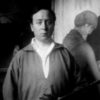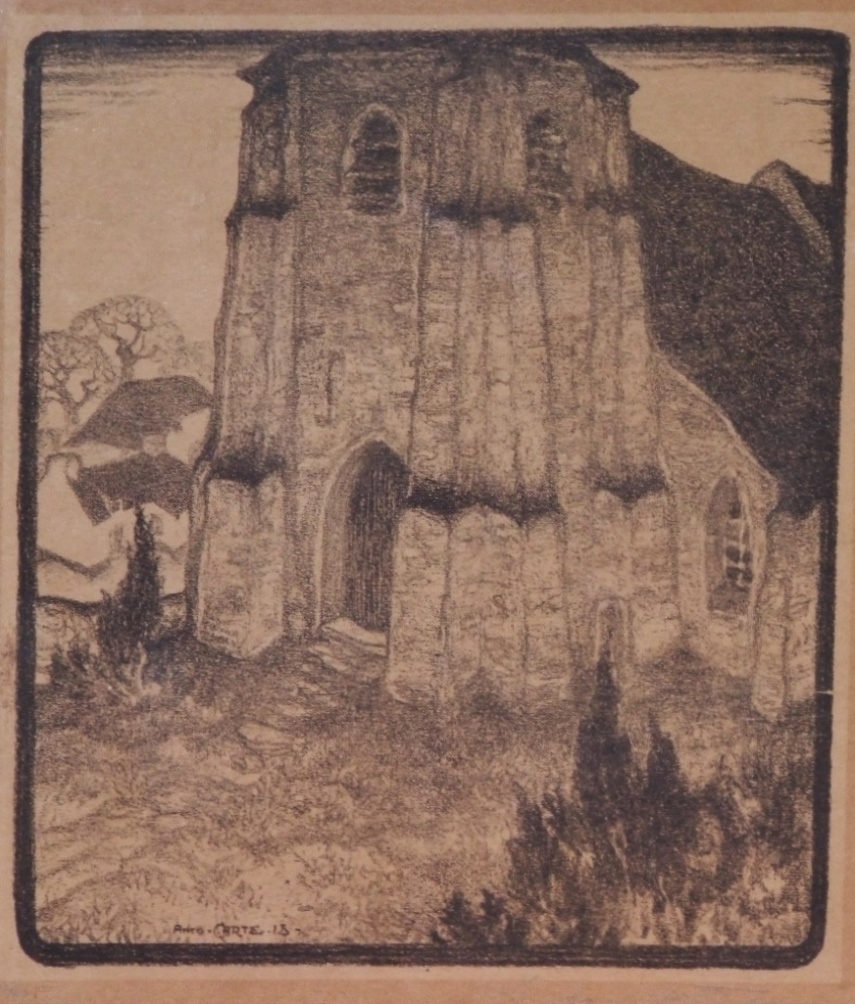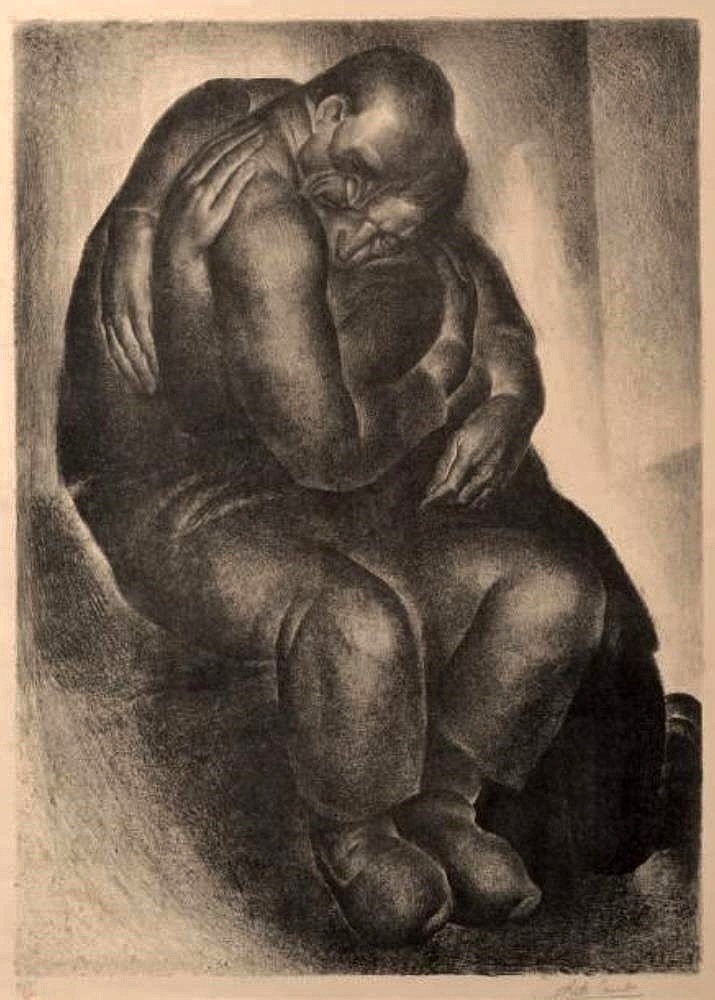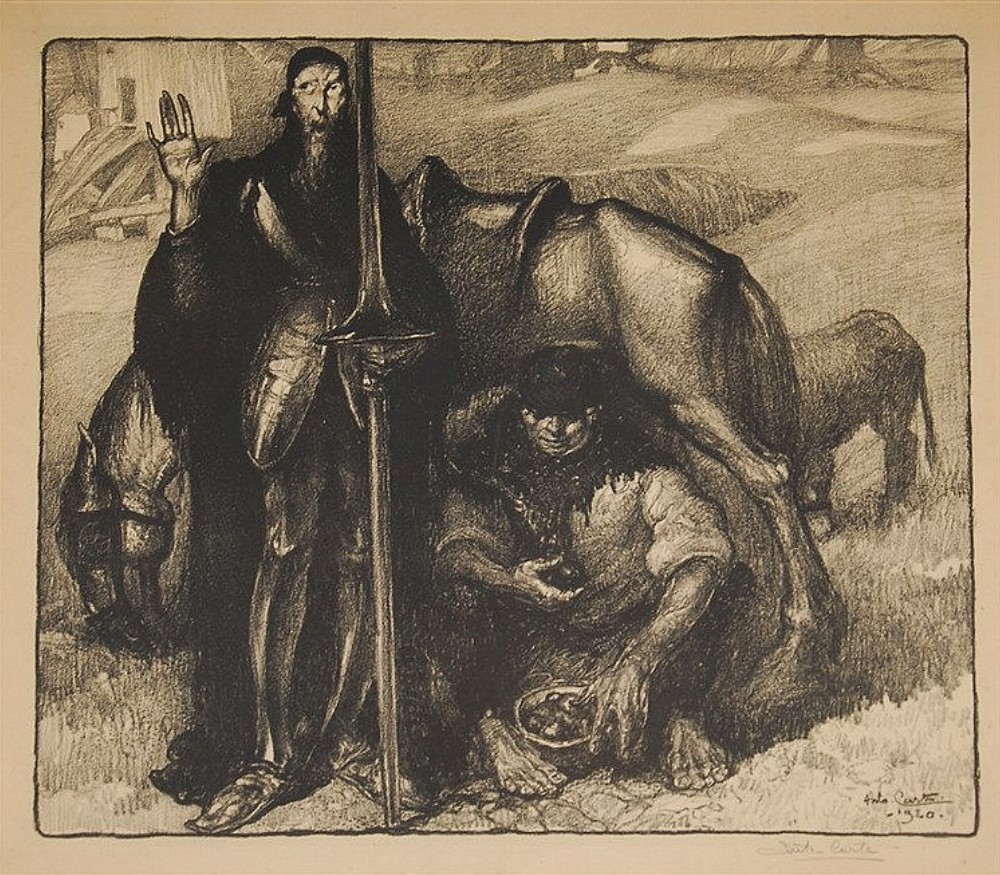Antoine Carte was a Belgian painter whose work lies at the edge of symbolism, naturalism and expressionism, sometimes close in style to that of Käthe Kollwitz. His subjects are inspired by the lives of miners, farmers, fishermen.
He was the son of a carpenter and furniture maker, and spent fourteen years in the studio of the painter, designer, and entrepreneur Frantz Depooter.
From 1897 to 1908, he attended the Academy of Mons and Brussels, and studied with Constant Montald, Émile Fabry and Jean Delville, three important Symbolist painters who exerted a profound influence on him.
In 1912 and 1913, a scholarship allowed him to go to Paris where he stayed with Cavaillé-Coll and Léon Bakst and worked for the Ballets Russes (Russian Ballet) of Serge de Diaghilev. Also contact with Pierre Puvis de Chavannes, and Maurice Denis.
After having several exhibitions in Brussels, Paris, and other European cities, a major retrospective of his work was held at the Carnegie Institute Pittsburgh in 1925, which ensured long-term success with the American public.
A teacher, scholar, and successful artist, Carte founded an expressionist style group Nervia, with his friends in 1928. He also produced drawings, engravings, book illustrations, posters, lithographs, banknotes, stamps, fresco design, sculpture, stained glass windows, and carpets.
#biography



